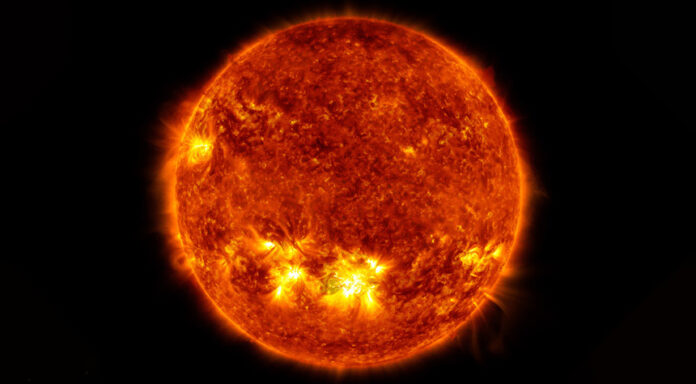Solar winds are generated by the snapping of a large “canyon of fire” filament on the sun. They can hit the Earth either July 20th or July 21st. This will cause a weak G1 geomagnetic storm.
SpaceWeather.com says that solar filaments were first discovered by sun-watchers on July 12. These dark, thread-like lines contrasted well with the bright background of the sun. A filament that had been running down the star’s northern edge erupted on July 15, creating an approximately 238,880-mile (384.400 km) “canyon of fire” at the top of the sun and spewing solar material at us.
Solar filaments are huge arcs of plasma or electrified gas that weave through the atmosphere of sunlight according to the magnetic field. These huge magnetic tubes can hold large quantities of plasma high above the sun’s surface. They can, however, fall and send solar wind blasts towards Earth, called coronal mass eruptions.
Tamitha Sko wrote that the snake-like filament flew to the Sun in a stunning ballet after the eruption. It will be hard to predict the magnetic orientation of this Earth-directed sunspot. G2-level (possible G3) conditions may occur if the storm’s magnetic field is oriented to the south!
G2 and G3 storms are described as moderate and strong.
CMEs that are ejected during the filament’s falling should reach Earth today or tomorrow. CMEs from planets with strong magnetic fields, like ours, are absorbed by the magnetic field. This can cause powerful geomagnetic storms. These storms can cause Earth’s magnetic field and other electromagnetic fields to become compressed by waves. They settle on the magnetic-field lines near the poles and stir up molecules in the atmosphere. These auroras are similar to the Northern Lights.
This filament will not cause a storm, which is a good thing. It is classified as a G1 sunspot and can cause power grid fluctuations, and affect satellite functions including mobile devices. However, it will not be significant. It will also bring the aurora southward to Michigan and Maine.
Live Science reported that extreme geomagnetic storms could cause the magnetic field of the planet to be disturbed enough to allow satellites to reach Earth. Strong geomagnetic storms could even cause the end of the internet, according to scientists. The National Oceanic and Atmospheric Administration’s Space Weather Prediction Center states that CMEs usually take between 15 and 18 hours for debris from reaching Earth. It can however move slower and take longer for it to reach Earth.
The sun is about to enter the most active phase of its 11-year-long solar cycles. As it nears the second peak in its activity, this storm is upon us. This is the second solar storm to hit Earth in 24 hours.
Astronomers have known that solar activity has fluctuated in cycles since 1775. Recent observations have revealed that the sun’s activity is higher than expected by NOAA (opens a new window). The sun’s activity is expected to continue rising over the next few decades, reaching a peak in 2025 before falling again. A paper was published in Astronomy and Astrophysics on July 20th. The paper proposes a new model for the sun’s activity, which separates counts of sunspots within each hemisphere. This could enable more accurate forecasts.
Scientists think the largest solar storm ever witnessed during contemporary history was the 1859 Carrington Event, which released roughly the same energy as 10 billion 1-megaton atomic bombs. After slamming into Earth, the powerful stream of solar particles fried telegraph systems all over the world and caused auroras brighter than the light of the full moon to appear as far south as the Caribbean. If a similar event were to happen today, scientists warn, it would cause trillions of dollars in damage and trigger widespread blackouts, much like the 1989 solar storm that released a billion-ton plume of plasma and caused a blackout across the entire Canadian province of Quebec, NASA reported.
The post Canyon of Fire Solar Storm Will Slam Into Earth appeared first on Conservative Research Group.




